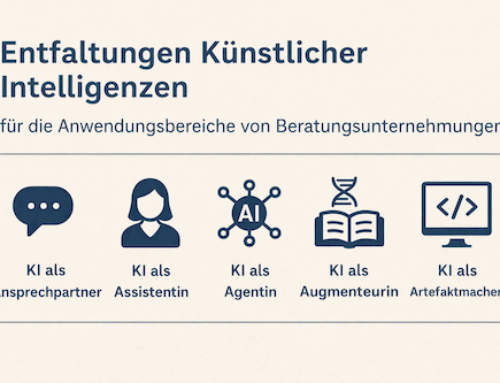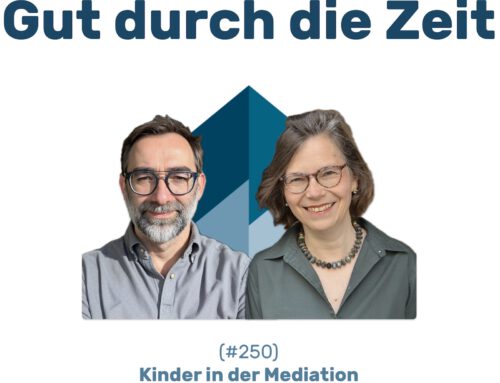The architecture of human thought.
5 Recommendations for mediators in mediation.
Basics of the two-systems model.
Authors: Julian-Jakob Strauss/Sascha Weigel
Photo by Soroush Karimi on Unsplash
Human thinking is split in two. When people make a decision or a judgement, they are two cognitive systems involved. They are called System 1 and System 2. This article shows quite simply – and what lies behind them. Five recommendations for mediation are derived directly from this.
Overview
What characterises these systems? The table lists the respective properties that have been attributed to each of them since their discovery in the 1980s.
| System 1 | System 2 |
| evolutionary old | evolutionary new |
| unconscious, subconscious | aware |
| together with animals | Uniquely human |
| implicit knowledge | explicit knowledge |
| automatically | controlled |
| fast | slowly |
| parallel | sequential |
| High capacity | Low capacity |
| intuitive | reflected |
| heuristic | analytical |
| pragmatic | logical |
| associative | rule-based |
| not easy to change | Mouldable |
| independent of normative convictions | influenced by normative convictions |
| independent of IQ | depending on IQ |
The associative memory
The Core of system 1 is the associative memory.
System 1 stores both innate and learnt skills „ that need to be available quickly and frequently. For example, humans are born with the ability to recognise and name objects. This ability is used every day and allows people to find their way around their environment. It is therefore not surprising when small children see a dog, for example, and say "woof woof". Other skills, such as riding a bike or driving a car, become quick and automated routines through long practice. This is why, for example, people cannot stop themselves „ from understanding simple sentences in their native language or from thinking of Paris when the capital of France is mentioned. There is a natural limit to human freedom here.
Other skills, on the other hand, are only learnt by experts: only (grand) chess masters can say in passing during a game of chess in the park that "White will be checkmated in three moves“ and only an experienced doctor can make a complex diagnosis with a single glance.
Such a Expert intuition has nothing magical about it. Rather, the situation itself provides the professional eye with enough clues for its associative memory to provide an expert opinion. It is therefore a kind of recognition called intuition. Every person performs intuitive feats on a daily basis. Associative memory enables us, for example, to read and understand the nuances of social situations or to judge a person's character from their face in a fraction of a second.
The „hard-working“ memory
The core of System 2 is the perceived „hard-working“ memory.
Decisions, solutions and conclusions that are not made and found quickly, effortlessly and without noticeable effort are usually made with the help of System 2. (See table above)
The interaction of both systems
The two-system model is a Theory of judgement and decision making. This is because there are connections and dependencies between the two systems which, in their interplay, can explain and make human decision-making processes understandable.
The theory summarises a large number of mental processes under the name System 1. It postulates that every decision and every judgement originates here.
System 1 works automatically and quickly, largely effortlessly and without voluntary control. The system constantly generates impulses that show themselves to people in the form of impressions, intuitions, intentions and feelings. Anyone who has ever simply sat or laid down on a mat with the aim of following these impulses, observing them and slowing them down, has got an idea that this is not possible. This exercise is generally called „meditation“. System 1 is particularly (stubbornly) evident here and makes it clear that the idea of „free will“ is above all an idea. But that is another matter.
As a rule, these impulses are received and accepted by System 2 as „suggestions“ and supported if necessary. They then sometimes mature into convictions or deliberately controlled actions. This may be one reason why people generally give in to their emotional impressions and desires.
However, if a person is confronted with a topic, a question or a problem to which System 1 cannot formulate an answer quickly and easily, it requests a more detailed and specific answer from System 2. System 2 does not switch itself on, but „is switched on“. Its activity is energy-consuming.
For example, if you are solving a maths problem, the question „3 x 2?“ is immediately countered by System 1 with „6!“. However, with „17 x 24?“, System 1 has difficulties with its speed, so that System 2 is called upon just as quickly.
The request (of an operation) from system 2 often goes hand in hand with the subjective experience of agency, freedom of choice and concentration. The person decides (unconsciously) that they must now think, make an effort and remember what they have learnt, heard, read or otherwise absorbed and stored. Apart from this, system 2 can be activated deliberately in order to overcome the intuitive impulses of system 1. In such a case, system 2 is responsible for self-control.
System 2 can therefore be Place of „reason“ denote. It encompasses the part of a person that they regard as their conscious self ("I think, therefore I am").

Photo by Taneli Lahtinen on Unsplash
Mental effort
System 2 monitors and controls all impulses generated by system 1. Some impulses are expressed directly in behaviour. Others are modified or suppressed by System 2. As System 2 only has a small budget of mental labour at its disposal, self-control is exhausting and tiring.
This phenomenon has been demonstrated in a study of six Israeli probation judges. These were probation judges who had to decide on applications for the conditional release of offenders. The psychologists recorded both the exact time of the decision (six minutes on average) and the judges' meal breaks (morning, midday and evening). They then compared the percentage of applications granted with the time elapsed since the last meal break. The percentage of applications granted peaked at around 65 per cent after each meal and then fell steadily to zero per cent until the next meal break. Hungry and exhausted judges thus seem to revert to the easier default position of denying probation requests. Psychologists refer to this phenomenon as self-exhaustion. It is caused by a drop in blood glucose levels that occurs when System 2 is heavily taxed. The effect can be at least partially offset by eating glucose-rich foods.
- Recommendation for mediators: Mediations better in the morning of the day.
Conflict management is exhausting. It requires willful and physical effort from all parties. Mentally exhausted people – as scientific studies have shown – tend to make more selfish decisions, use sexist language and make more superficial judgements in social situations. Mediators are therefore advised to schedule the mediation in such a way that the parties do not suffer from self-exhaustion. As the budget of mental willpower is greatest in the morning and is then reduced by decisions of all kinds, it is advisable to schedule a Mediation in the morning rather than in the evening to take place.
The effects of stress
Short-term stress usually has an adaptive effect and triggers adaptive behaviour in the person concerned. This mechanism is known as overcompensation. A conflict between the mediants can therefore be understood as a stressor that activates System 2, ideally leading to overcompensation and generating additional amounts of motivation and willpower in anticipation of a future conflict. Chronic stress, on the other hand, permanently impairs the functions of System 2. As System 2 functions as a source of creativity and imagination, the part of the human brain that enables creative problem solving is less available the more urgently it is needed.
2. recommendation for mediators: Ensure freedom from stress!
In a conflict to be mediated, the mediator therefore has the task of avoiding chronic stress situations for the mediating parties and themselves as far as possible. It may be traditional for certain negotiation rounds to end with a compromise only under pressure, deep in the night or after far too long sessions. Such „Calvinistic understandings of work“ are a hindrance in mediations that aim to find creative solutions.
Heuristics
For heuristics, see also our blog post here to.
Not all intuitions that people perceive are based on learnt skills. In addition to the expert intuition that every person has in specific areas, there are also Heuristics an alternative source of intuition represent.
A heuristic is a Shortcut in thinking. This is sometimes a shortcut that leads to a different (than the correct) result.
When System 1 is confronted with a difficult question, it simply answers an easier one instead. This happens below the human perception threshold. The person who finds the solution does not notice the substitution and thus the error in the result. This occurs regularly in working life, for example; presentations contain abstract content that is regularly very demanding, increasing the likelihood that listeners will use mental shortcuts when processing the content without realising it.
Affect heuristics
System 1 has a whole bundle of mental shortcuts at its disposal. Firstly, it is possible to be guided by feelings of liking or disliking when making a judgement about the person (Affect heuristics). If, for example, the person unconsciously reminds you of your old maths teacher who – unfairly(!) gave you – bad marks, the assessment of the person who is not the maths teacher will still not be positive. However, if the person subconsciously reminds you of your best friend or even yourself, the person is more likely to be rated as likeable and sociable.
Halo effect
Apart from this, system 1 is inclined to infer unknown characteristics from known characteristics of a person (Halo effect). This creates a uniform, consistent image of the person. People are simply not good at dealing with ambiguous and ambivalent phenomena, to which people undoubtedly belong.
Judgment heuristics
If the potential new employee is charismatic or physically attractive, they are automatically categorised as nicer, more honest and more intelligent. Finally, System 1 assesses a person's assertiveness and leadership strength based on their facial features (Judgment heuristics). In men, striking facial features and a winning smile lead to a correspondingly positive evaluation. All these heuristics are used unconsciously by System 1 and are perceived by humans as gut feelings or intuition. As they allow people to function quickly and effectively, they are labelled by psychologists as either "quick and economical" or "quick and dirty".
The following heuristics also exert their influence in mediation.

Photo by Cody Davis on Unsplash
WYSIATI ("What you see is all there is")
System 1 works associatively. This means that System 1 links ideas that are stored in associative memory with each other and thus calls them into consciousness (System 2). However, it only takes into account those ideas that are activated by the specific processing. The system ignores ideas that are not activated or do not exist. They practically do not exist. This procedure often leads to premature conclusions.
Imagine the presentation example from just now with the difference that a colleague attended the presentation and is now reporting on his impression. The potential employee seemed intelligent and strong.
Do you also have the impression that he has leadership qualities?
„Vermutlich, ja!“
If you are intelligent and come across as strong, you can also lead people…
Your System 1 has made a judgement based on limited information. Congratulations.
However, this may have been a premature conclusion.
What if the next two adjectives for the presenter had been "dominant" and "closed"?
Her judgement would probably be different now.
WYSIATI (only what you know counts) is therefore a Heuristics in favour of first impressions, which is applied by System 1 when it generates impulses for upcoming judgements or decisions on a limited data basis. It is based on an asymmetry between the way the brain processes current information and the way it deals with information it does not have. Since System 2 is inert, it generally supports the impressions generated by System 1, which are then transformed into beliefs.
In a corresponding study, psychologists analysed the reaction of people who received one-sided information during a fictitious court hearing and were aware of this. The test subjects were either only presented with the pleadings of one party or those of both parties. As is usual in such a trial, the pleadings each contained a description of the events from the legal perspective that favoured the respective party. The decisive factor was that the lawyers only argued on the basis of information that was available to both parties in advance, so that the arguments were based on the same information from different perspectives. As a result, it turned out that the presentation of the first one-sided narrative had a very strong effect on the participants' judgement, even though the test subjects were familiar with the test set-up and could have easily visualised the arguments of the other side!
This applied both to those subjects who heard only one plea and to those who heard both presentations. Interestingly, the test subjects who heard only one plea were much more confident in their judgements about the case than those who heard both sides. On the one hand, it follows from these considerations that people overestimate the quality of their knowledge. Secondly, people often do not take into account the fact that information that should be decisive for their judgement is not available. Furthermore, the study suggests that System 1 suppresses doubt and ambiguity in narratives once they have been constructed.
3. recommendation for mediators:
Nothing is as it seems – especially not due to limited but clear descriptions!
One of the mediator's tasks when the parties are negotiating is to illuminate conflicts from different perspectives and to promote mutual understanding. As System 1 automatically draws far-reaching conclusions from scanty information and is unable to assess how great the leaps it makes when drawing conclusions are, information that the mediator gathers in a preliminary discussion prior to the actual mediation, for example, at least unconsciously has a one-sided effect on its judgement of the conflict. It takes mental effort to have System 2 revise the convictions once they have been formed. Irrespective of this, it is the mediator's task to always critically scrutinise his hypotheses about the conflict and adapt them to the course of events. Without having sufficiently analysed the parties' views, the mediator's assessment of the conflict is therefore rarely objective. Apart from this, the mediator can use the heuristic strategically by presenting the parties with external mediation successes that raise positive expectations of the process and thus increase the willingness to reach an agreement.
4. recommendation for mediators:
Always anticipate that you may not yet have or have processed information that could disrupt the story you think you are hearing. Complexity doesn't just appear when we recognise it. It is regularly contained in the simple things – on the invisible backside.
Halo effect 2.0 – narrative distortions in the name of coherence
One consequence of the „halo effect“ is particularly important for mediation: mediants tell their conflict story in a distorted retrospective. This is all too human, but nevertheless particularly important for the mediator to bear in mind. (All) people tend to see behaviour as an expression of general tendencies and personality traits. People are what they do. That's it. Therefore, in conflict stories, behaviours become descriptions of being: „You're so lazy I couldn't take it anymore!“ And that's why the Harvard negotiation conceptto separate people and behaviour.
But the urge for coherence is strong, especially as the inconsistency of the other person is particularly annoying in a conflict. Do you know the Desire for inner clarity too? Contradictions are difficult to accept even in front of ourselves. Why? Well, we humans are calibrated to understand, for better or worse! Understanding fulfils expectations, fulfilled expectations create the illusion of security. And security…!
In the conflict, or rather in the debate about it, this often leads to the „realisation“ that one has always known it or at least „could have known it, but ultimately only suspected it“. The 2008 financial crisis was seen coming by laypeople in the aftermath, just as they had always known that so-called experts had no idea whatsoever and it is therefore quite logical that they did not see the financial crisis coming.
The mistake only becomes apparent to the person who knows the consequences. experienced has. Knowledge is not worth much beforehand; before the consequences materialise, the knowledge of the consequences as such is worthless. not recognisable.
5. recommendation for mediators:
The mediator's mistakes and missteps may seem obvious in the mediation that follows. The more obvious the flaws in the narrative are, the more cautious you should be as a mediator in letting this slippery story stand without being asked. Appreciation here means that no one could have foreseen things, even if they claim this now or claimed it at the time. Things have to materialise before they can be considered true.
The heuristics and errors of judgement shown here are only a small part of this topic.
What heuristics, false conclusions and decision-making errors have you encountered in your work as a mediator, coach or supervisor?
What recommendations can you give us?
We would be delighted to read about them in the comments and share them with you.
Thank you very much and have a good time!
Julian J. Strauss & Sascha Weigel





Leave A Comment